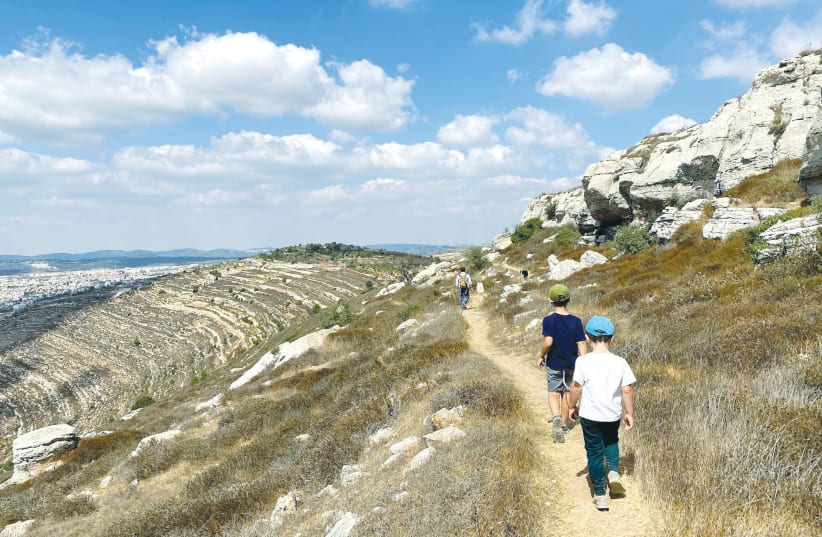June has always been one of my favorite months. As a child growing up in New Orleans, the 1st of June usually coincided with the very first days of summer vacation. Back then, I looked forward to seemingly endless summer days full of freeze pops, daily trips to the pool, and fleeting midday thunderstorms.
In Israel, the month of June looks a little different. Although my kids still have one more month of school, summer’s impending arrival is in the air. The days are getting longer, and Israel’s landscapes are changing. With the rainy season firmly behind us, shades of green have now been replaced with a palette of tawny golds. Ripe wheat and other grains are just about ready to be gathered from the field.
In some places, the views this month are reminiscent of scenes right out of the bible. One of my favorite walks, especially on Shabbat afternoon, is the Path of the Patriarchs, an ancient trail that makes its way through my town. This path, adjacent to Route 60, is part of a road that leads from Beersheba in southern Israel to Mount Tabor in the North.
Here, one can take in views of rolling hills above a deep valley, where figs, grapevines, and olive orchards grow in orderly rows. All along the path, wild grains turn gold in the month of June, just in time for the holiday of Shavuot. The long stalks of ripening grain are particularly beautiful at sunset.
But the Path of the Patriarchs is more than just a pretty place. It’s also part of what is known today as the Biblical Highway, an ancient roadway that connects the many cities frequented by important biblical figures.


Beersheba, where Abraham made a treaty with local kings, is at the southernmost tip. Then, the Biblical Highway (Route 60) passes through Hebron, site of the Cave of the Patriarchs before reaching Bethlehem, where the story of Ruth, read on Shavuot, took place. From there, it continues on to the holy city of Jerusalem, before reaching Beth-El, then, Shiloh (the site of the first ancient temple) and Nazareth near Mount Tabor in the North.
The Path of the Patriarchs was once Judea’s major roadway, frequented in early times by Abraham, Isaac, and Jacob, and later by anyone traveling to Jerusalem. During the Roman era, it was the main road into the holy city; there are still many ancient Roman milestones which lay scattered along the path.
One of my favorite spots along the Path of the Patriarchs is an ancient mikveh, or ritual bath, located midway through my Shabbat walk. This ritual bath, originally filled with water channeled from an ancient cistern right nearby, has two separate openings: one for the ritually impure to enter and another for the purified pilgrims to emerge back onto the road. Although the mikveh is no longer filled with water, it is full of green growth and algae, nourished by the moisture contained within. The entranceway to the mikveh is framed by wild grape vines, hanging with immature fruit in late spring and early summer.
Sometimes, we hike this trail as a family on long afternoons, wandering off the main road towards smaller footpaths below, which snake between untended almond and fig trees. My kids often run to the wooden benches placed at random spots on the hill, perfect places to stop and take in the picturesque scenery. The panorama we gaze at likely looks much the same as it did during biblical times.
I can’t think of a better place to walk on a Shabbat afternoon in June.
Back in Louisiana
Back in the days of my childhood in New Orleans, I could hardly have imagined that an ancient biblical pathway would have been my children’s stomping grounds. Back then, golden sunsets along a biblical trail towards Jerusalem never featured in my imagination. Instead, Shabbat walks included waving to neighbors in running shorts and gardening garb as I walked along in frilly Shabbat dresses past city traffic.
With a humble name like Route 60, one might take Israel’s ancient pathway for granted. Much of the Biblical Highway looks like any modern-day road, the footprints of ancient Israelites and their pack animals having long been stamped out with time. But on the small section where our Shabbat walks take place, dotted with ritual baths and ancient road markers, one can appreciate how fortunate we modern Jews are to be able to follow in the footsteps of our forefathers in the Land of Israel.
